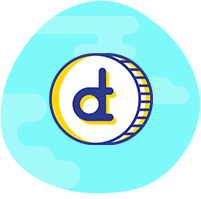District Creation Platform
The district0x Network is comprised of decentralized global marketplaces, hyperlocal communities and more. The district creation platform will provide users with an easy to use interface to design and deploy their own districts to the district0x Network. Using the district creation platform, users will access a way to customize the parameters of the smart contracts that power a district
The interface will offer numerous customizable UI options to support a wide variety of markets and communities as well as an auxiliary module directory (similar to the Apple App Store) which allows for the easy discovery of “plugins” which will ultimately extend the functionality and utility of districts.
To learn more about Districts and decentralized marketplaces, click here
d0xINFRA
The district0x Network seeks to be home to a vast array of markets and communities. In accordance with this vision, d0xINFRA has been designed as an open and extendable modular system that allows districts to implement unique features and enhanced functionality. This framework is currently under development, and it will allow virtually any type of marketplace to be built upon it without outside interference.
Digging a bit deeper, the d0xINFRA is an open source framework, which means that the software contains source code that anyone can inspect, modify, and enhance. d0xINFRA; in particular, is comprised of Ethereum smart contracts and front-end libraries that govern the deployment of new districts to the network and provide their baseline functionalities.
The district baseline functionalities are as follows:
- Searching & filtering
- Posting & listings
- Ranking & reputation
- Payments & invoicing
Each district’s backend will be controlled by a combination of d0xINFRA contracts (shared by all districts on the network) and a set of district-specific contracts. Similarly, for the front-end, districts will share reusable components where possible. To keep things as simple as possible, an ‘under-the-hood’ front-end logic will be used, while still allowing for broad visual UI diversity. It’s important to understand; however, that d0xINFRA does not dictate the visual side of things, which means the designs are completely up to the creator of the district, or the community that uses it.
The districts are intended to be extendable and open via the use of auxiliary modules (think of these as “plug-ins”) which improve functionality and create unique features.
Auxiliary Modules
To allow for the development and deployment of new features, functionality, and
revenue generating mechanisms to districts, districts can be customized and extended
through the use of auxiliary modules.
Ultimately, the districts will decide (on a district by district basis) what auxiliary modules are implemented via their governance processes.Third parties are encouraged to develop and contribute auxiliary modules to district0x, and are incentivized to do so via the ability to charge districts fees for usage rights.
Examples of Auxiliary Modules
An auxiliary module could be a feature that enhances the user experience of a district. An example of this could be a moderation mechanism that allows for the flagging and takedown of spam, malicious links, or explicit content within a district.
An example of an auxiliary module that could potentially generate revenue for a district, is one which provides a mechanism for users to bid on premium placement of their listings, similar to Google AdWords. Winning bids would be sent to the district’s governance pool. The participants in a district ultimately determine how funds in their governance pool are to be allocated via their voting processes.
Another example of a potential revenue generating auxiliary module, is one which allows for the optional insurance of proposals on the platform. One could imagine a third-party service deploying a module to offer financial guarantees on arrangements between users of the platform in exchange for a fee.








